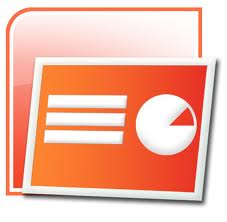The Muscular System
The human body has about 640 muscles. Learning the name, location, and action of each can be a huge challenge for introductory level anatomy students. This unit is divided into two parts. First, the internal and microscopic anatomy of a single muscle is related to the actual physiology of a muscle contraction. Second, the names, locations, and actions of the major surface muscles of the human body are reviewed.
Muscular System Anatomy and Physiology Lecture Powerpoint
 |
Purpose: This Powerpoint lecture dissects a single muscle into the individual fascicles and fibers that it is made of. Students will learn how the individual protein filaments within a muscle fiber work together to produce a contraction. The immediate, short-term, and long-term energy sources available to muscle tissue are also covered.
Essential Concepts: Muscle Anatomy, skeletal muscle, fascia, muscle fiber, neurotransmitters, motor unit, motor neuron, twitch, summation, ATP, cell respiration, fermentation, steroids, muscle disorders.
Muscular System Student Notes Outline
Purpose: Taking efficient notes can be a big challenge for many students, especially when working from a Powerpoint lecture. This outline gives students a means to take notes that guides them toward important concepts and avoids the pitfalls of writing word-for-word or simply not taking notes at all. The outline lays out each of the key concepts, ideas, and blank diagrams that students are expected to learn. They fill in the missing details as the lecture proceeds.
Essential Concepts: Muscle Anatomy, skeletal muscle, fascia, muscle fiber, neurotransmitters, motor unit, motor neuron, twitch, summation, ATP, cell respiration, fermentation, steroids, muscle disorders, muscle naming, head muscles, trunk muscles, arm muscles, leg muscles.
Anatomy For Beginners - Movement Worksheet
Purpose: This is the first episode of the Anatomy For Beginners series, hosted by Dr. von Hagans of the Instute for Plastination. The skin is completely removed from a cadaver, revealing the full human musculature underneath. Dr. von Hagans dissects out muscles of the forearm and and manipulates them to demonstrate how movement occurs. Signficant coverage is also given to the brain and spinal cord.
Essential Concepts: Skeletal muscle, joints, tendons, ligaments, cartilage, osteoarthritis, flexors, extensors.
Cat Dissection - Muscular System
Purpose: The cat, while not anatomically identical to humans, has a lot of the same muscles. Its size also makes it easier for students to try to see some of the muscles they previously learned in lecture. This dissection guide helps students to locate and identify some of these important muscles.
Essential Concepts: Muscle naming, head muscles, trunk muscles, arm muscles, leg muscles.
Bigger, Stronger, Faster Documentary Worksheet
Purpose: Bigger, Stronger, Faster is a 2008 documentary about the use of steroids in America. It follows the careers of three brothers who struggled with the decision about whether or not to use steroids to gain an edge in pursuing their dreams. This documentary provides a very unbiased, objective look at the health effects and ethics of using steroids.
Essential Concepts: Anabolic steroids.
Muscular System Study Guide
Purpose: This study guide is a condensed listing of the major vocabulary words from this chapter, along with a set of practice questions and diagrams similar to what might be on a written test. The questions and vocabulary are roughly written in the same order as they appear in the lecture.
Essential Concepts: Spongy bone, compact bone, osteocytes, types of bones, fontanels, sinuses, axial skeleton, appendicular skeleton, types of joints, bone fractures.
